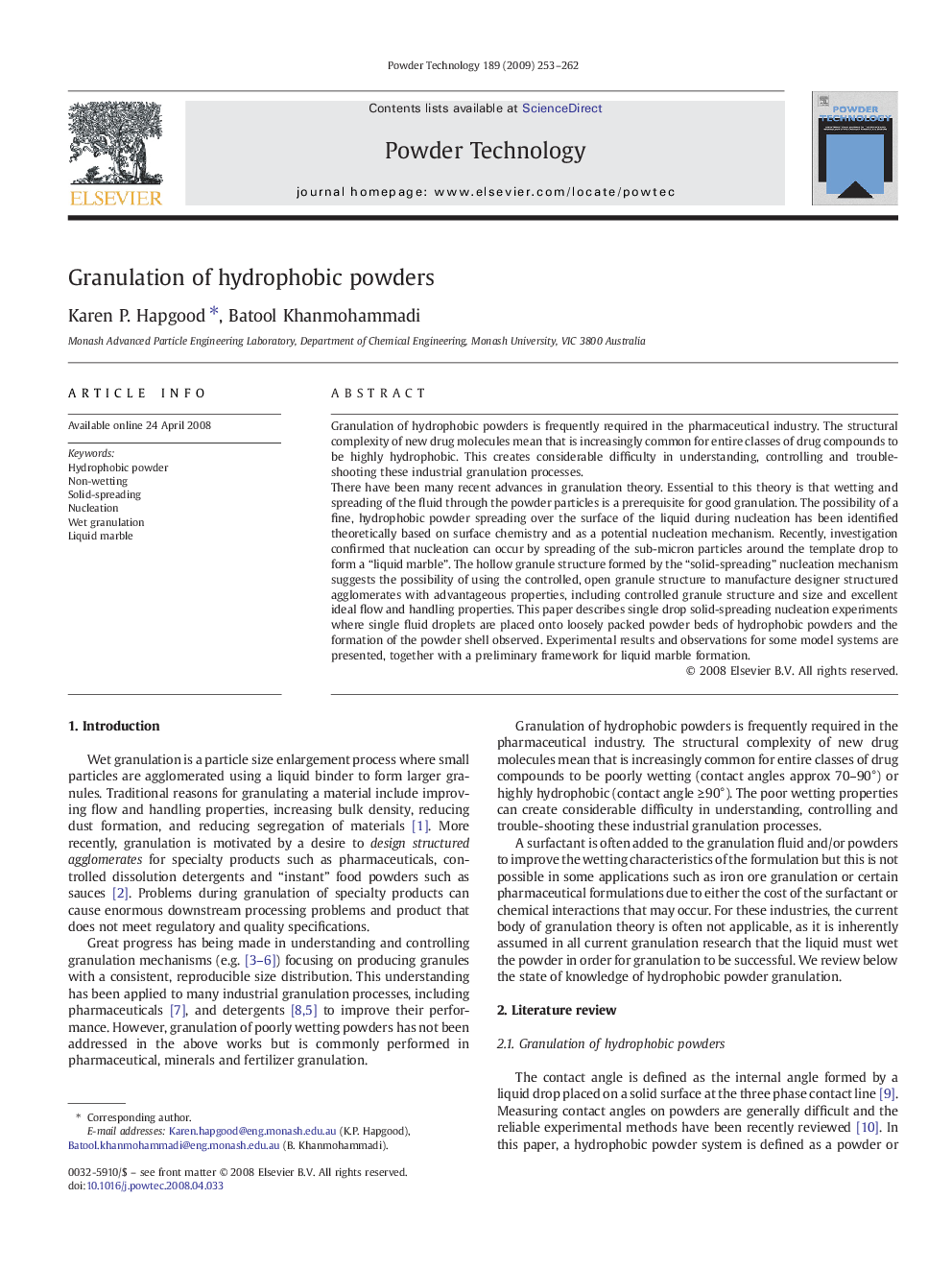| Article ID | Journal | Published Year | Pages | File Type |
|---|---|---|---|---|
| 238495 | Powder Technology | 2009 | 10 Pages |
Granulation of hydrophobic powders is frequently required in the pharmaceutical industry. The structural complexity of new drug molecules mean that is increasingly common for entire classes of drug compounds to be highly hydrophobic. This creates considerable difficulty in understanding, controlling and trouble-shooting these industrial granulation processes.There have been many recent advances in granulation theory. Essential to this theory is that wetting and spreading of the fluid through the powder particles is a prerequisite for good granulation. The possibility of a fine, hydrophobic powder spreading over the surface of the liquid during nucleation has been identified theoretically based on surface chemistry and as a potential nucleation mechanism. Recently, investigation confirmed that nucleation can occur by spreading of the sub-micron particles around the template drop to form a “liquid marble”. The hollow granule structure formed by the “solid-spreading” nucleation mechanism suggests the possibility of using the controlled, open granule structure to manufacture designer structured agglomerates with advantageous properties, including controlled granule structure and size and excellent ideal flow and handling properties. This paper describes single drop solid-spreading nucleation experiments where single fluid droplets are placed onto loosely packed powder beds of hydrophobic powders and the formation of the powder shell observed. Experimental results and observations for some model systems are presented, together with a preliminary framework for liquid marble formation.
Graphical abstractNucleation can occur by the “solid spreading” nucleation mechanism where particles spread around a template drop to form a “liquid marble”. This paper describes single drop solid-spreading nucleation experiments where the formation of the powder shell is observed. Experimental results and observations for some model systems are presented, together with a preliminary framework for liquid marble formation.Figure optionsDownload full-size imageDownload as PowerPoint slide
